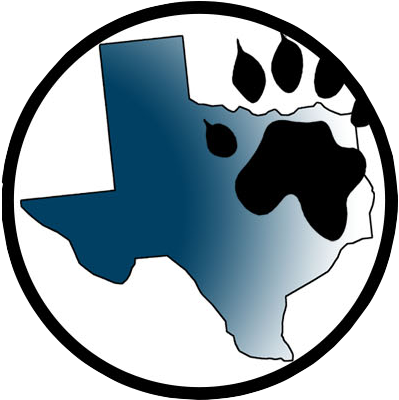Found a Baby Wild Animal All Alone?
How to tell if baby animals are orphaned, injured, or perfectly fine—and what to do if they need your help
Baby wild animals might seem like they are orphaned or injured, but it’s common to see babies occasionally by themselves. It’s critical for the health of the babies to allow the parent(s) to care for them naturally and only intervene when there is truly a need. Some species leave their young alone all day, while others are tightly supervised by their parent(s). Age, species, and behavior give clues to whether or not an animal is in need of assistance. These tips can help you decide whether to take action.
Signs that a wild animal needs your help
Evidence of bleeding
An apparent or obvious broken limb (drooping or not hanging normally)
Featherless or nearly featherless and on the ground
Shivering
A dead parent nearby
Crying and wandering all day long
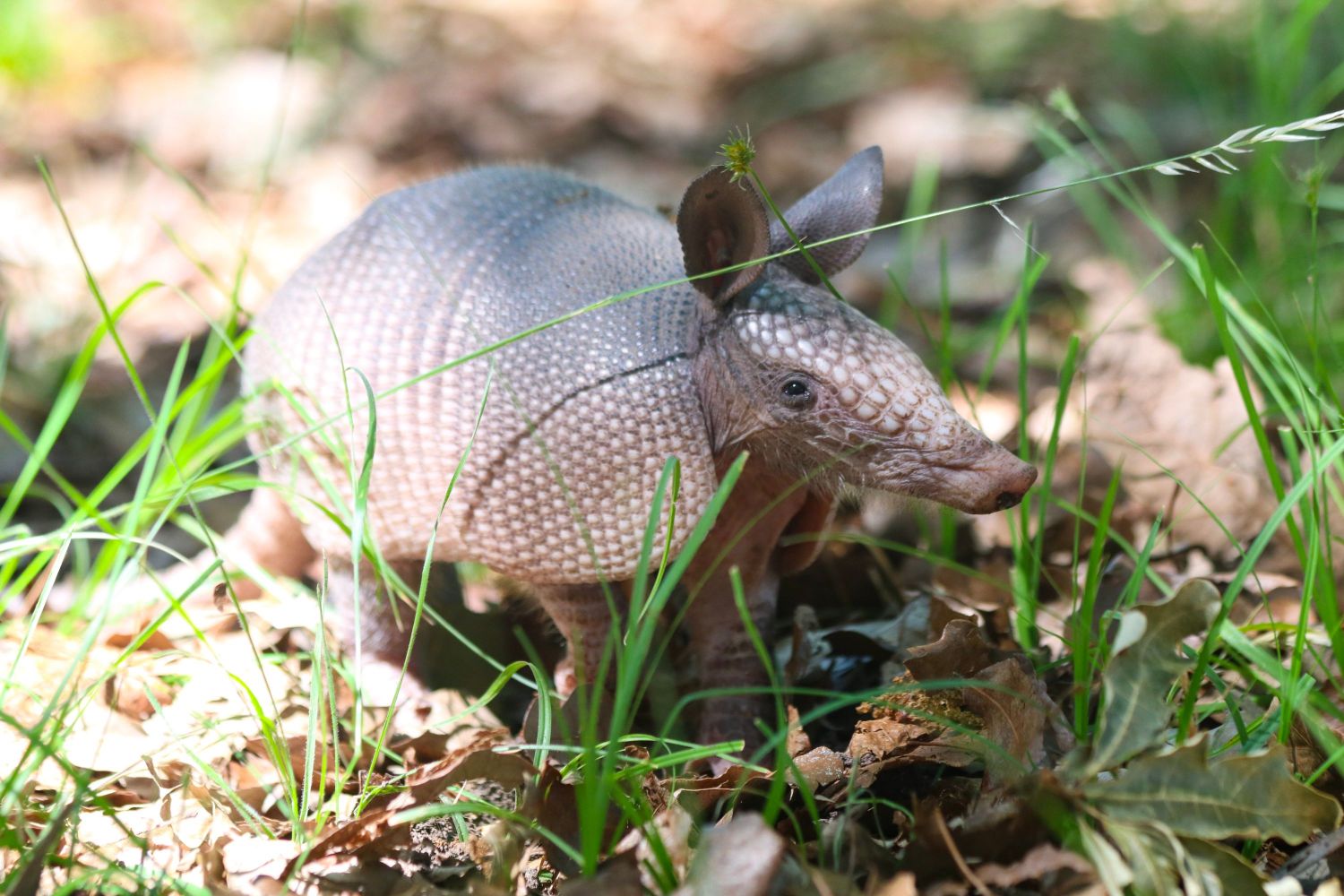
North Texas Wildlife Center does not accept adult skunks, raccoons, or deer of any age.
Please contact your local animal services or state wildlife authority for assistance with these animals.
Tips by species
Baby Birds
If baby birds are clearly injured, in imminent danger, or have been in a cat’s mouth, contact North Texas Wildlife Center. However, if featherless or nearly featherless baby birds have just fallen from their nest but appear unharmed, put them back in the nest if you can do so without danger to yourself. (It’s a myth that birds will abandon their young if a person touches them; birds do not have a strong sense of smell.).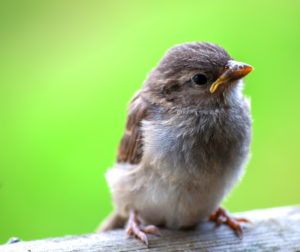
Fledglings: Birds with fully feathered bodies but short or non-existent tail feathers may be fledglings (adolescent birds who have left the nest). You might see them hopping on the ground, unable to fly. This is normal; birds learn to fly from the ground up! Fledglings might remain on the ground for a few days or even a week, supervised and fed by their parents a few times each hour before they get the hang of flying. You can tell if the fledglings are being fed by watching from a distance to see whether a parent bird flies over to them, usually a few times an hour. You can also look for white-grey feces near the fledgling. Birds defecate after being fed, so the presence of fecal material means that the birds are being cared for. Be sure to keep cats indoors and dogs leashed until the fledglings are old enough to fly. If you are positive that the parents are not returning to feed the babies, contact North Texas Wildlife Center.
Fully feathered birds (no bald spots): If the original nest was destroyed or is too high to reach, hang a small, shallow basket close to where the original nest was. Woven stick baskets from garden stores or supermarket floral departments work well; they resemble natural nests and allow rain to pass through so the birds won’t drown. Adult birds won’t jump into anything they cannot see out of, so make sure the basket is not too deep. Put the fallen babies into the new nest and keep watch from a distance for an hour to make sure the parent bird(s) return to the new nest to feed the chicks. Watch closely, because parent birds can be quite secretive, and hummingbirds are very fast. If they definitely do not return, contact North Texas Wildlife Center.
Nearly or mostly featherless birds: These birds will become too cold in a makeshift nest, so you must place them in the original nest. If that’s not possible, take them to North Texas Wildlife Center. Remember that baby birds do best when raised by their parent(s) or other birds, so please try to reunite them with their parent(s) before calling a rehabilitator.
Baby Rabbits
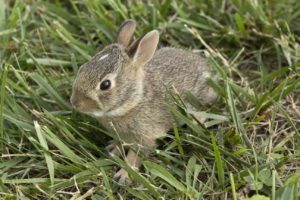
A rabbit that is 4 inches long, hops well, and has open eyes and erect ears is independent from its mother and should be allowed to fend for itself. Uninjured baby rabbits in an intact nest should also be left alone. Although they might look abandoned because mom isn’t around, mother rabbits visit their dependent young only a few times a day to avoid attracting predators.
If the nest has been disturbed, lightly cover it with natural materials you find around the nest, like grass, fur, or leaves, and follow these steps:
Keep all pets out of the area.
- Avoid touching the babies, because foreign smells may cause the mother to abandon them young.
- Use yarn or string to make a tic-tac-toe pattern over the nest to assess whether the mother is returning to nurse the young.
- Check back 24 hours later.
- If the yarn or string was moved aside but the nest is still covered with fur, grass or leaves, the mother has returned to nurse the babies.
- If the “X” remains undisturbed for 24 hours, contact North Texas Wildlife Center.
Baby Squirrels
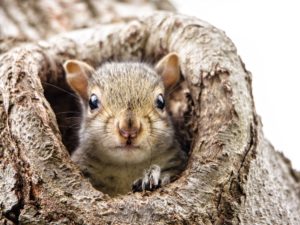
A squirrel that is nearly full-sized, has a full and fluffy tail, and can run, jump, and climb is independent. However, if a juvenile squirrel continuously approaches and follows people, the mom is probably gone. In this case, you should contact North Texas Wildlife Center because the baby is very hungry and needs care.
There are a few cases where you might need to intervene:
- A baby squirrel falls from a nest
- A nest falls from a tree
- A felled tree contains an intact nest
If the baby and/or its nest fell from the tree today, give the mother squirrel a chance to reclaim the young and relocate to a new nest. If the baby is uninjured, leave it where it is, leave the area, keep people and pets away, and monitor from a safe distance. It may take the mother a couple of hours to retrieve her young.
If it’s chilly outside or the baby isn’t fully furred, place them in a shoebox with something warm underneath (like a heating pad on a low setting or a hot water bottle). Be sure to put a flannel or folded tee shirt between the baby and the heating device, or they could overheat. To avoid touching you can scoop it gently into the box. Do not cover them with anything or the mother might not be able to find it, and do not use terry cloth towels or washcloths as their nails can get caught on the fabric loops.
If the baby is not retrieved by dusk, take these steps:
- Wearing thick gloves gather the squirrel(s) and place them inside a thick, soft cloth, such as a cloth diaper, fleece scarf, t-shirt, or hat.
- Place one of the following items beneath the cloth: a chemical hand warmer inside a sock, a hot water bottle (replace the hot water every 30 minutes) or a heating pad set on the lowest setting. (If the heating pad has no cover, put it inside two pillow cases so the babies don’t overheat.)
- Place the baby squirrel(s), cloth, and warmer inside a small cardboard box with air holes or carrier. Call North Texas Wildlife Center.
Baby opossums

Baby opossums are born as embryos, barely larger than a bee, and spend about two months nursing in their mother’s pouch. When they get to be about 3-4 inches long and start riding around on the mother’s back, they may fall off without her noticing. As a general rule, if an opossum is over 7 inches long (not including the tail), it’s old enough to be on its own; if it’s less than 7 inches long (not including the tail), it’s are an orphan, and you should contact North Texas Wildlife Center.
Baby raccoons

If a baby raccoon has been seen alone for more than a few hours, it is probably an orphan. Mother raccoons don’t let their young out of their sight for long. Put an inverted laundry basket over the baby (with a light weight on top so it cannot push its way out), and monitor it until well into the nighttime hours. Raccoons are nocturnal, so mom should come out at night to reclaim her young. You can also put the cub in a pet carrier and close the door. Instead of latching it closed, prop the door closed with an angled stick. When mom returns, she’ll run in front of the carrier, push over the stick, and the door will pop open.
If the mother does not return, contact North Texas Wildlife Center. In spring and summer, people often set traps in a misguided effort to resolve garbage and other “nuisance” issues. Unfortunately, this approach leads to trapped and killed mothers who leave their starving young behind. If anyone in your neighborhood is setting traps, persuade them to use more humane and effective methods instead.
Baby skunks
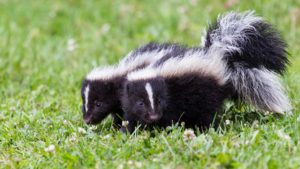
If you see a baby skunk (or a line of baby skunks, nose-to-tail) running around without a mother in sight, they could be orphaned. Skunks have poor eyesight, so if something scares the mother and she runs off, the babies can quickly lose sight of her.
Monitor the situation to see if the mother rejoins the young. If the babies are on the move, put on gloves and slowly place a plastic laundry basket (with lattice sides) over the babies to keep them in one spot and make it easier for the mother to find them. Do not put a weight on top of the laundry basket.
If the mother returns, she will flip up the basket and get her babies. If she has trouble doing this, you should approach very slowly and lift the basket to let them out. Since skunks are very near-sighted, fast movements can startle them into spraying. If you move slowly and speak softly, though, you will not get sprayed. Skunks warn potential predators by stamping their front feet when they are alarmed, so if the mother doesn’t do this, you’re safe to proceed. If no mother comes to retrieve the young by dawn, contact North Texas Wildlife Center.
Baby Foxes

Fox kits (babies) will often appear unsupervised for long periods while their parents are out hunting for food. They will play like puppies around the den site until the parents decide they’re old enough to go on hunting trips. Then they will suddenly disappear. Observe the kits from a distance; if they seem energetic and healthy, leave them alone. If they appear sickly or weak, or if you have reason to believe both parents are dead, contact North Texas Wildlife Center.
Finding Help for the Animal
Once you are sure an animal needs your help, contact North Texas Wildlife Center for assistance, Phone: 469-901-WILD (9453) Email: info@ntxwildlife.org. If we are unavailable, please contact the DFW wildlife hotline at 972-234-9453 or Texas Wildlife Rehabilitators by County If you’re outside of DFW, use AHNOW.org for help locating a rehabber in your area.
Capturing and transporting the animal
Never handle an adult animal without first consulting a wildlife professional, and even small animals can injure you. Once you’ve contacted someone who can help, describe the animal and its physical condition as accurately as possible.Pictures sent via text or email are very helpful.
Unless you are told otherwise, here’s how you can make an animal more comfortable for transport while you’re waiting for help.
2. Put on thick gloves and cover the animal with a towel or pillowcase as you scoop them up gently and place them in the container.
3. Do not give the animal food or water. It could be the wrong food or fluids and cause them to choke, trigger serious digestive problems, or cause aspiration pneumonia. Many injured animals are in shock, and force-feeding can kill them.
4. Place the container in a warm, dark, quiet place—away from pets, children, and all noise (including the TV and the radio)—until you can transport the animal. Keep the container away from direct sunlight, air conditioning, or heat.
5. Transport the animal as soon as possible. Leave the radio off and keep talking to a minimum. Because wild animals aren’t accustomed to our voices they can become very stressed by our noises. If they’re injured or orphaned, they’re already in a compromised condition. Keep their world dark and quiet to lower their stress level and help keep them alive.
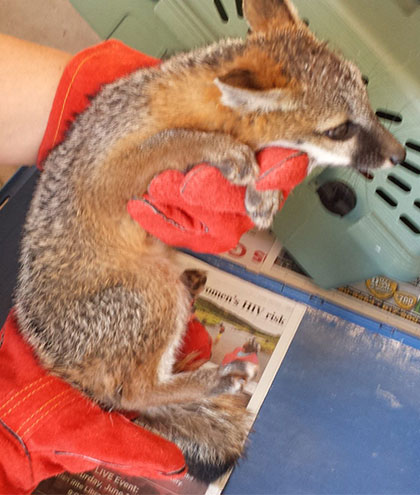
Attention North Texas Land Owners !!
NTXWC needs a home!
Want to help our cause?
We’re looking for a donated site location that has the following:
– Accessible land or an existing structure
– Ability to run water & power supply
– Easy access for the public to transport orphaned & injured wildlife to us
Contact us for more information & details!
469-901-WILD (9453)
info@ntxwildlife.org

